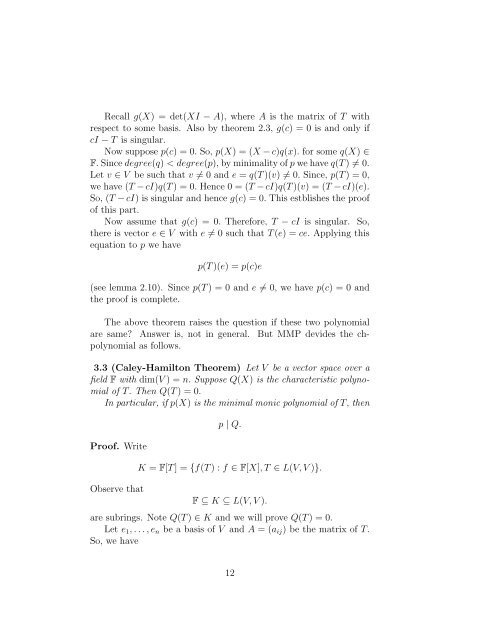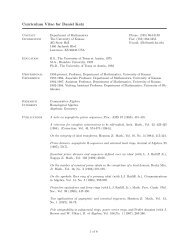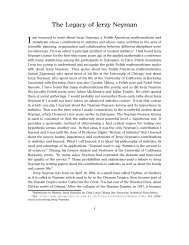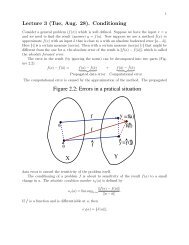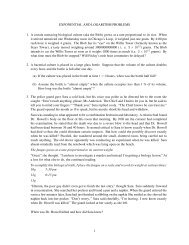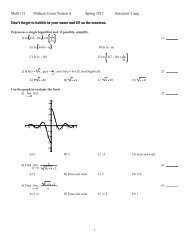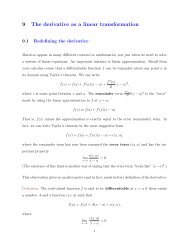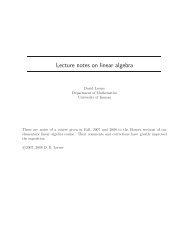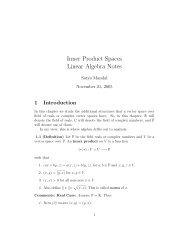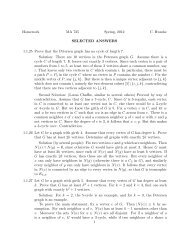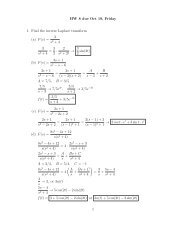Canonical Forms Linear Algebra Notes
Canonical Forms Linear Algebra Notes
Canonical Forms Linear Algebra Notes
Create successful ePaper yourself
Turn your PDF publications into a flip-book with our unique Google optimized e-Paper software.
Recall g(X) = det(XI − A), where A is the matrix of T with<br />
respect to some basis. Also by theorem 2.3, g(c) = 0 is and only if<br />
cI − T is singular.<br />
Now suppose p(c) = 0. So, p(X) = (X − c)q(x). for some q(X) ∈<br />
F. Since degree(q) < degree(p), by minimality of p we have q(T ) = 0.<br />
Let v ∈ V be such that v = 0 and e = q(T )(v) = 0. Since, p(T ) = 0,<br />
we have (T − cI)q(T ) = 0. Hence 0 = (T − cI)q(T )(v) = (T − cI)(e).<br />
So, (T − cI) is singular and hence g(c) = 0. This estblishes the proof<br />
of this part.<br />
Now assume that g(c) = 0. Therefore, T − cI is singular. So,<br />
there is vector e ∈ V with e = 0 such that T (e) = ce. Applying this<br />
equation to p we have<br />
p(T )(e) = p(c)e<br />
(see lemma 2.10). Since p(T ) = 0 and e = 0, we have p(c) = 0 and<br />
the proof is complete.<br />
The above theorem raises the question if these two polynomial<br />
are same? Answer is, not in general. But MMP devides the chpolynomial<br />
as follows.<br />
3.3 (Caley-Hamilton Theorem) Let V be a vector space over a<br />
field F with dim(V ) = n. Suppose Q(X) is the characteristic polynomial<br />
of T. Then Q(T ) = 0.<br />
In particular, if p(X) is the minimal monic polynomial of T, then<br />
Proof. Write<br />
Observe that<br />
p | Q.<br />
K = F[T ] = {f(T ) : f ∈ F[X], T ∈ L(V, V )}.<br />
F ⊆ K ⊆ L(V, V ).<br />
are subrings. Note Q(T ) ∈ K and we will prove Q(T ) = 0.<br />
Let e1, . . . , en be a basis of V and A = (aij) be the matrix of T.<br />
So, we have<br />
12


